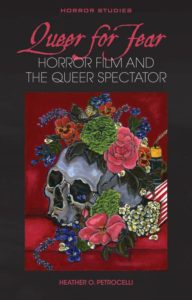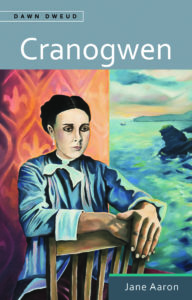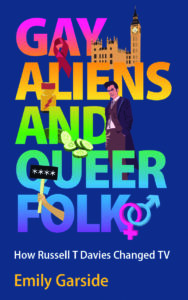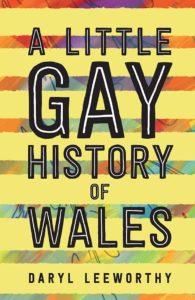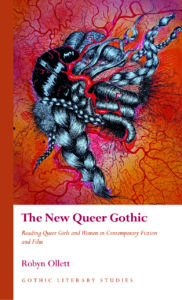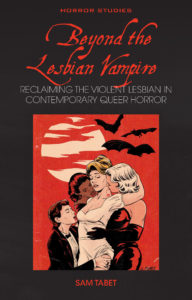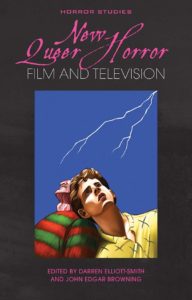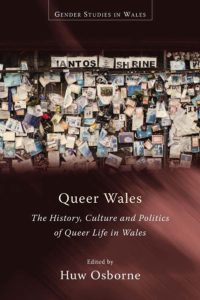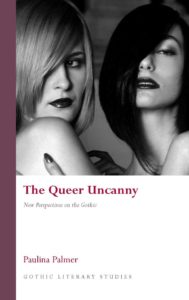Pride Month Reading List
Queer for Fear analyses the relationship queer people have to horror film, building upon decades of theory that previously emphasised horror’s queerness as being subtextual, allegorical and figurative. This groundbreaking interdisciplinary empirical study of the LGBTQ+ community not only offers the first inclusive understanding of the horror-loving queer spectator’s opinions, habits and tastes, but also evidences how and why queers have a distinctive relationship to horror. Leveraging original survey data, in-depth oral histories and theory, Petrocelli evidences that queer people have ontological connections to the horror genre, and concludes that horror is queer to the queer spectator. This study also establishes that queer spectators actively engage with horror to work through their trauma, knowingly have a camp relationship to horror, and joyously commune through horror screenings featuring drag performance. Queer for Fear is an overdue contribution to the fields of queer, film, horror, trauma, camp and live cinema studies.
Yn oes Fictoria, ystyriwyd menywod yn anaddas ac anabl ar gyfer pob arweinyddiaeth gyhoeddus a deallusol. Ond llwyddodd Cranogwen, sef Sarah Jane Rees (1839–1916) o Langrannog, i ennill parch ac enwogrwydd fel bardd, darlithydd, golygydd, pregethwraig, dirwestwraig – ac ysbrydolwraig to newydd o awduresau a merched cyhoeddus. Mae’r gyfrol hon yn dilyn ei thrywydd er mwyn deall pam a sut y cododd Cranogwen, benyw ddibriod o gefndir gwerinol, i’r fath fri a dylanwad ymhlith Cymry ei hoes. Teflir goleuni newydd hefyd ar ei bywyd carwriaethol cyfunrywiol, a’i syniadau arloesol ynghylch rhywedd.
Cyhoeddwyd cyfrolau bywgraffiadol ar Cranogwen ym 1932 a 1981, ond oddi ar hynny mae twf y mudiad ffeminyddol wedi ysgogi llawer astudiaeth (ar awduron benywaidd a lesbiaid y bedwaredd ganrif ar bymtheg, er enghraifft, ac ar wragedd mewn cymunedau morwrol) sy’n berthnasol iawn i’w hanes. Yng ngoleuni’r holl ddeunydd ychwanegol hyn, ceir yn y gyfrol hon ddarlun newydd o’i bywyd a’i dylanwad.
Enillydd Gwobr Ffeithiol Greadigol Llyfr y Flwyddyn 2025
The television writing of Russell T Davies defies easy categorisation, ranging from children’s programmes, across Shakespeare, historical drama and comedy, to the landmark series that have made him a household name: Queer As Folk, Doctor Who and It’s a Sin.
Gay Aliens and Queer Folk takes a deep dive into the queer narratives Russell T Davies has brought to our screens, exploring how each work created new space for LGBTQ+ stories to enter our living rooms and looking at their impact on the people who saw themselves reflected on mainstream television, often for the first time.
Covering Russell T Davies’ career from his earliest work to his highly anticipated return to the TARDIS for Doctor Who’s 60th anniversary, and highlighting key themes such as politics, sex, AIDS and the role of Wales in his writing, Emily Garside reveals how Davies broke down barriers, showing gay characters unapologetically living their lives to the full and celebrating the complexity and joy of queer identities.
A Little Gay History of Wales tells the compelling story of Welsh LGBT life from the Middle Ages to the present day. Drawing on a rich array of archival sources from across Britain, together with oral testimony and material culture, this pioneering study is the first to examine the experiences of ordinary LGBT men and women, and how they embarked on coming out, coming together and changing the world. This is the story of poets who wrote about same-sex love and translators who worked to create a language to describe it; activists who campaigned for equality and politicians who created the legislation providing it; teenagers ringing advice lines for guidance on coming out, and revellers in the pioneering bars and clubs on a Friday and Saturday night. It is also a study of prejudice and of intolerance, of emigration and isolation, of HIV/AIDS and Section 28 – all features of the complex historical reality of LGBT life and same-sex desire. Engaging and accessible, absorbing and perceptive, this book is an important advance in our understanding of Welsh history.
SPACE
Queer theory, queer literary criticism and queer cultural criticism often focus on western, white, cis men. This book provides the first in-depth analysis of contemporary queer and Gothic texts that focus on the subjectivity, characterisation and representation of queer girls and women. The New Queer Gothic applies interdisciplinary theory to offer a new mode and method of reading literary and film fiction. From monstrous femininity in tales of girlhood, to paranoid negativity and transformation in young womanhood, through to postcolonial doubles, hybrid assimilation, corporeal possession, and final girls at the end of everything – this book takes as its canon works from the past fifteen years concerning queer and questioning girls and women in Gothic settings and narratives, to elucidate upon questions of queer feminist ethics, biopower and global identity politics.
Beyond the Lesbian Vampire is a groundbreaking dive into the pervasive archetype of the violent lesbian, examining this historically problematic figure within cultural and cinematic imagination – from witch to vampire to murderer – and identifying her resurgence in seven critically acclaimed queer horror films of the late 2010s.
Each case study depicts multidimensional lesbian characters trending toward more justifiable narrative reasons for violence. Additionally, this new iteration of the violent lesbian self-consciously references earlier portrayals, including her popular vampiric form, despite shedding her literal fangs. The combination of excessive citation alongside narrative shift gestures towards a reclamation of the violent lesbian within queer horror.
The author weaves textual analysis and scholarly debates around assimilation and the legibility of lesbianism’s queerness to reveal the cultural salience of the violent lesbian, and of the queer and lesbian fears and pleasures she evokes. Beyond the Lesbian Vampire is a vital contribution to lesbian studies, horror studies, queer studies and feminist studies.
This anthology comprises essays that study the form, aesthetics and representations of LGBTQ+ identities in an emerging sub-genre of film and television termed ‘New Queer Horror’. This sub-genre designates horror crafted by directors/producers who identify as gay, bi, queer or transgendered, or works like Jeepers Creepers (2001), Let the Right One In (2008), Hannibal (2013–15), or American Horror Story: Coven (2013–14), which feature homoerotic or explicitly homosexual narratives with ‘out’ LGBTQ+ characters. Unlike other studies, this anthology argues that New Queer Horror projects contemporary anxieties within LGBTQ+ subcultures onto its characters and into its narratives, building upon the previously figurative role of Queer monstrosity in the moving image. New Queer Horror thus highlights the limits of a metaphorical understanding of queerness in the horror film, in an age where its presence has become unambiguous. Ultimately, this anthology aims to show that in recent years New Queer Horror has turned the focus of fear on itself, on its own communities and subcultures.
SPACE
SPACE
The relationship between nation and queer sexuality has long been a fraught one, for the sustaining myths of the former are often at odds with the needs of the latter. This collection of essays introduces readers to important historical and cultural figures and moments in queer life, and it addresses some of the urgent questions of queer belonging that face Wales today.
SPACE
Queer Others in Victorian Gothic: Transgressing Monstrosity explores the intersections of Gothic, cultural, gender, queer, socio-economic and postcolonial theories in nineteenth-century British representations of sexuality, gender, class and race. From mid-century authors like Wilkie Collins and Elizabeth Gaskell to fin-de-siecle writers such as J. Sheridan Le Fanu, Florence Marryat and Vernon Lee, this study examines the ways that these Victorian writers utilized gothic horror as a proverbial ‘safe space’ in which to grapple with taboo social and cultural issues. This work simultaneously explores our current assumptions about a Victorian culture that was monolithic in its disdain for those who were ‘other’.
SPACE
SPACE
This volume investigates the roles played by the concept of the uncanny, as defined by Sigmund Freud and other theorists, in the representation of lesbian and male gay sexualities and transgender in a selection of contemporary British, American and Caribbean fiction published 1980-2007.


